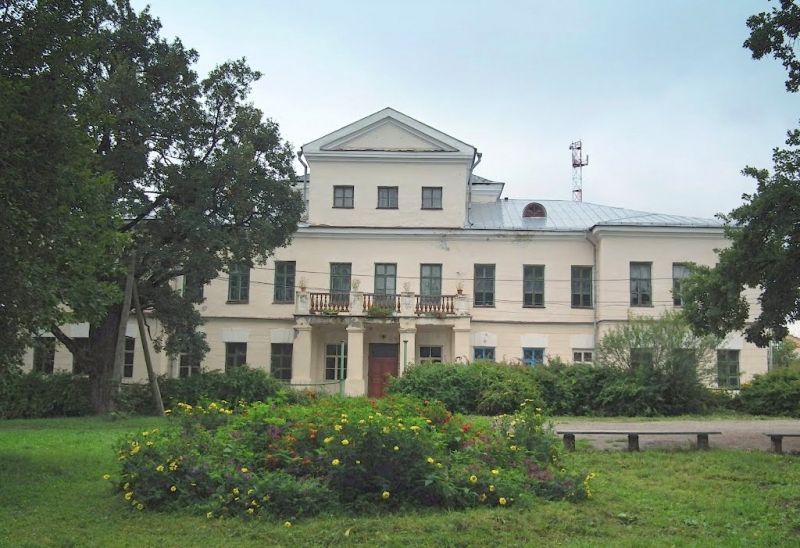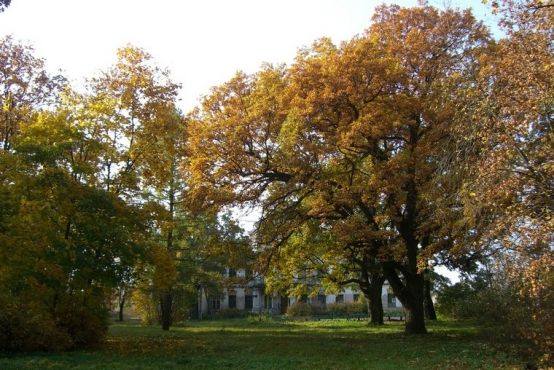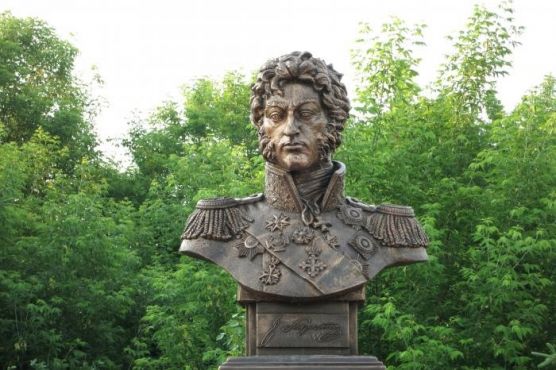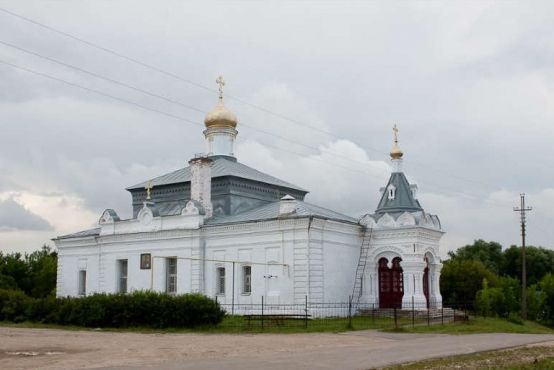Estate of princes Golitsyn in the village of Sima
- Address:
- Yuryev-Polsky district, the village of Sima
- GPS:
- 56.68313759, 39.54835537
The estate complex of princes Golitsyn in the village of Sima, Yuryev-Polsky district, is an object of cultural heritage of federal significance. Today, the estate is known primarily as a place where an outstanding Russian commander, the hero of the Patriotic War of 1812, General P.I. Bagration died from wounds and was originally buried.
The village of Sima is located 25 kilometers to the north of Yuryev-Polsky on the bank of the Simka River. For the first time, the village is mentioned in scribal books in the 14th century, as a boyar patrimony of Konstantin Ivanovich Dobrynsky. His son Fyodor already wore the nickname Simsky – by the name of the village. The grandson of Fyodor is also known with the same nickname – Khabar Simsky, voivode (military governor) of the Grand Duke Basil III. In the middle of the 16th century, the village became the royal patrimony of Ivan IV the Terrible, who bequeathed it to his wife Anne. But these lands became the most famous in Peter's times. In 1708, Peter I presented the rich merchant village of Sima to general-field marshal M.M. Golitsyn (1675-1730) for his unprecedented courage and victory over the Swedes in the battle near the village of Lesnaya (now – the Mogilev region, Belarus), which, according to Peter I, became "the mother of the Poltava victory". M.M. Golitsyn remained a military general until the end of his life, so he had no time to work on the arrangement of the estate. But the village of Sima until 1918 was in the permanent possession of the Golitsyn family.
Large construction in Sima unfolded in the second half of the 18th century, under the grandson of M.M. Golitsyn – Prince Boris Andreyevich Golitsyn (1766-1822). Two stone temples were built – the Epiphany Church (1769) and the church in honor of Dmitry Solunsky (1775). At the same time, the main two-storey mansion with a mezzanine in the style of classicism was built, which has survived to the present day. It housed rich historical and artistic collections and a magnificent library, collected by several generations of princes Golitsyn. On the sides of the house there were outbuildings for staff. Behind the manor house was a regular park of lindens, divided by an oval pond into two parts with a traditional radial layout. Under Prince B.A. Golitsyn estate in Sima reached its heyday.
B.A. Golitsyn made a brilliant military career, rising to the rank of lieutenant-general in 1798. However, in January 1800 Paul I dismissed Golitsyn from service, and at 33, Boris Andreevich left the capital for his estate in Sima. B.A. Golitsyn commanded the Vladimir militia in the Patriotic War of 1812. He maintained friendly relations with the outstanding Russian commander, General P.I. Bagration, who was his wife’s nephew, nee Princess A.A. Georgian, granddaughter of the Georgian king Bakar III.
Pyotr Ivanovich Bagration (1765-1812) visited the estate of the Golitsyns in Sima more than once. It was here that he was informed of the appointment of the commander-in-chief of the 2nd Western Army. His army repulsed all the attacks of Napoleon at Borodino, making up the left wing of the battle formation of the Russian troops. However, P.I. Bagration was seriously wounded in the leg in the Battle of Borodino. At the insistence of the Golitsyns, on September 7 (old style) he was taken to Sima for treatment in a carriage, which is now represented in the exposition of the Juryev-Polsky Historical, Architectural and Art Museum. According to legend, the peasants lined the road with straw, so that the exhausted prince suffered less from the shaking of the crew, and the last kilometers carried him in his arms. The general's condition became critical when the adjutant informed him of the surrender of Moscow. September 12, 17 days after the wound, P.I. Bagration died of gangrene. He was buried in the Epiphany Church in Sima. Twenty-seven years later, in 1839, on the initiative of the poet-partisan Denis Davydov, the remains of General P.I. Bagration were moved to the Borodino field. However, Davydov himself did not live to see this event for only a few months. Emperor Nicholas I, many prominent state and military figures, as well as the owner of the estate Sima, son of B.A. Golitsyn, Andrei Borisovich Golitsyn, participated in the procedure of the reburial.
The Epiphany Church was destroyed in 1959. In 1963, a memorial plate was installed on the site of the original burial of P.I. Bagration. In 2012, to the 200th anniversary of the Patriotic War of 1812, a bronze bust for the outstanding commander was installed here.
Not only well-known military leaders and politicians, but also scientists were among the next generations of owners of the Golitsyn’s estate in Sima. Here was born Prince Boris Borisovich Golitsyn (1862-1916), a Russian physicist, an academician who became one of the founders of Russian seismology, the organizer of the Russian seismic service.
From 1870 to the revolution of 1917, the last owner of the estate was Prince Alexander Borisovich Golitsyn, an officer of the Russian army, the leader of the nobility of the Vladimir province in 1901-1909. At this post he was succeeded by V.S. Khrapovitsky, the owner of the estate Muromtsevo. When A.B. Golitsyn, a famous in the province stud farm, a small brick factory, an apiary with different systems of hives, a beautiful orchard, greenhouses were at the estate of Sima. A telegraph line was made, linking Sima with Yuryev-Polsky and Pereslavl-Zalessky.
After the revolution of 1917 the Golitsyn estate was nationalized, it housed an orphanage. In 1945, the former manor house was adapted to an administrative institution. In 1960, the main house of the Golitsyn estate was included in the list of objects of cultural heritage of federal significance. In the following years, repair work was carried out here. But funding was not enough for the complex restoration of the manor ensemble. Unfortunately, the covered galleries that connected the main house with the wings were lost now. One of the outbuildings is in a dilapidated state. The park is overgrown, its layout is difficult to read, a fountain and gazebos are not preserved.
Currently, the main building of the Golitsyn estate houses the rural House of Culture, the local library, as well as a small folk museum dedicated to the Patriotic War of 1812 and General P.I. Bagration. The exposition presents copies of Russian orders, with which the outstanding commander was awarded, copies of sabers of Russian officers of that period, several books about P.I. Bagration, etc.
 Tourism portal of the
Tourism portal of the


